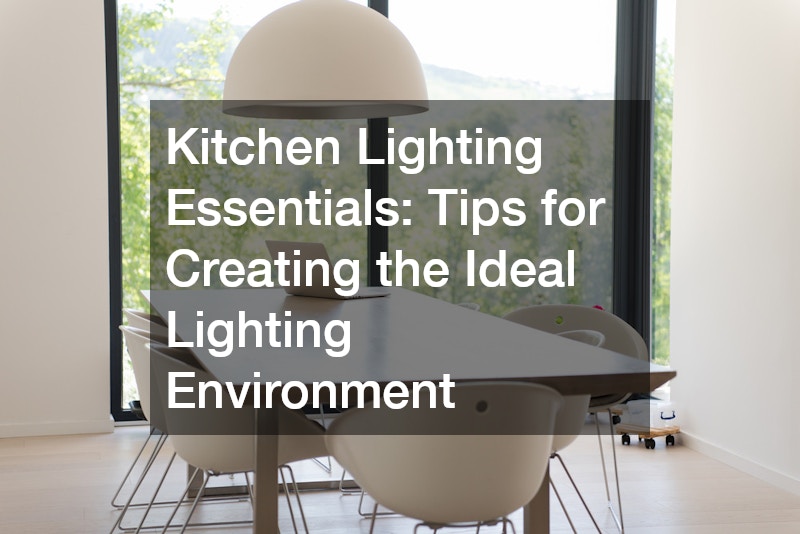Kitchen lighting is more than just a functional necessity—it’s a key design element that can elevate the aesthetic appeal and usability of one of the most important rooms in your home. Whether you’re remodeling or simply looking to improve your current lighting setup, understanding how to layer different types of lighting will ensure your kitchen is both practical and visually stunning.
This guide will walk you through the essential aspects of creating an ideal lighting environment in your kitchen, from understanding different types of lighting to incorporating unique features like pyramid skylights.
The Three Layers of Kitchen Lighting
To achieve a well-lit kitchen, it’s essential to use a combination of ambient, task, and decorative lighting. Each layer serves a specific purpose, and together they create a balanced, inviting space.
1. Ambient Lighting
Ambient lighting is the foundation of your kitchen’s lighting design. It provides general, all-over illumination, making the space feel open and welcoming. Ambient light is essential for ensuring the kitchen is evenly lit without harsh shadows. It’s usually provided by ceiling-mounted fixtures, recessed lights, or, in some cases, even natural light sources like skylights or large windows.
One unique feature that homeowners can explore is incorporating pyramid skylights into their kitchen design. Pyramid skylights allow natural light to flood into the kitchen from above, giving the space an airy, sunlit feel during the day. Not only do they add architectural interest, but they also reduce the need for artificial light during daylight hours, making your kitchen more energy-efficient.
2. Task Lighting
Task lighting is crucial for providing focused light where it’s needed most. In a kitchen, this is especially important in areas where precision tasks are performed, such as the countertops, sink, and stove. While ambient lighting provides general brightness, task lighting ensures that specific areas are well-lit for chopping, mixing, and cooking.
One popular option for task lighting is under-cabinet lighting. These fixtures are installed under kitchen cabinets to illuminate the countertops directly, preventing shadows from overhead lights. Another effective choice is pendant lights, which can be placed above islands or workstations to add both function and style. For the sink area, a well-placed recessed light or small pendant will ensure you’re not working in the dark.
3. Decorative Lighting
Decorative lighting serves as the “jewelry” of the kitchen, offering an opportunity to showcase your style and add personality to the space. While decorative lights do provide some illumination, their main purpose is aesthetic. Chandeliers, pendant lights, or even unique LED strip lighting around the island or cabinets can serve as eye-catching focal points.
For a modern kitchen, linear suspension lights or a series of sleek, minimalist pendants can give the room a contemporary edge. If you’re leaning toward a more traditional or vintage design, consider installing a statement chandelier or ornate fixtures that align with the overall style of your kitchen.
Combining Lighting Types for a Balanced Effect
Now that you understand the three main types of lighting—ambient, task, and decorative—it’s time to put them together for a cohesive lighting plan.
Start with ambient lighting as your base layer. Make sure it’s bright enough to light the entire kitchen without creating any dark spots. Recessed lighting or ceiling fixtures are good choices for this, and, as mentioned, natural light from windows or pyramid skylights can be a fantastic addition.
Next, focus on task lighting to ensure the functionality of key areas like countertops, the stove, and the sink. Under-cabinet lighting is a go-to solution here, but well-placed pendant lights can also serve a dual function as both task and decorative lighting.
Finally, don’t forget about decorative lighting. Choose fixtures that complement your kitchen’s style, whether it’s modern, rustic, or traditional. The decorative layer should enhance the ambiance and provide that extra touch of flair.
Smart Lighting Solutions for the Modern Kitchen
In addition to the three primary layers of lighting, modern technology offers opportunities to elevate your kitchen’s lighting even further. Consider using smart lighting systems that allow you to control your kitchen lights with your smartphone or voice commands. These systems offer adjustable brightness levels, customizable color temperatures, and even the ability to schedule lighting changes throughout the day.
Smart lighting solutions also let you create “scenes” for different times of day or activities. For instance, you might set a bright, crisp light for morning prep work and a softer, warmer glow for evening dining. This level of control enhances both the practicality and atmosphere of your kitchen, ensuring it adapts to your daily needs.
Lighting Mistakes to Avoid
While creating the perfect lighting environment, it’s essential to avoid common pitfalls. One of the biggest mistakes is relying on a single light source for the entire kitchen. This can lead to harsh shadows and an uninviting atmosphere. Layering your lighting effectively solves this problem.
Another mistake is under-lighting certain areas, particularly workspaces like the countertops and stove. These areas require focused task lighting to ensure safety and efficiency during meal prep.
Finally, don’t forget about dimmer switches. These are a must-have for kitchens, as they give you control over the light intensity, allowing you to adjust the mood for different activities.
Final Thoughts
Creating the ideal lighting environment for your kitchen requires thoughtful planning and a combination of different lighting types. By incorporating ambient, task, and decorative lighting, you’ll ensure that your kitchen is both functional and beautiful. Don’t overlook the power of natural light, either—features like pyramid skylights can bring in plenty of daylight and reduce your need for artificial lighting.
With the right lighting setup, your kitchen can become a bright, welcoming space where functionality meets design.
.


